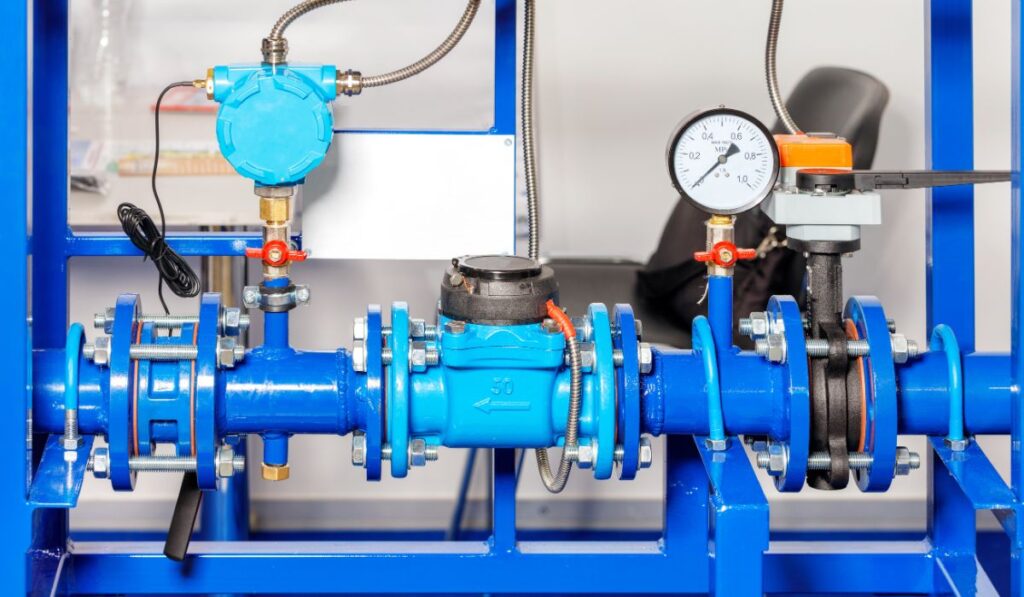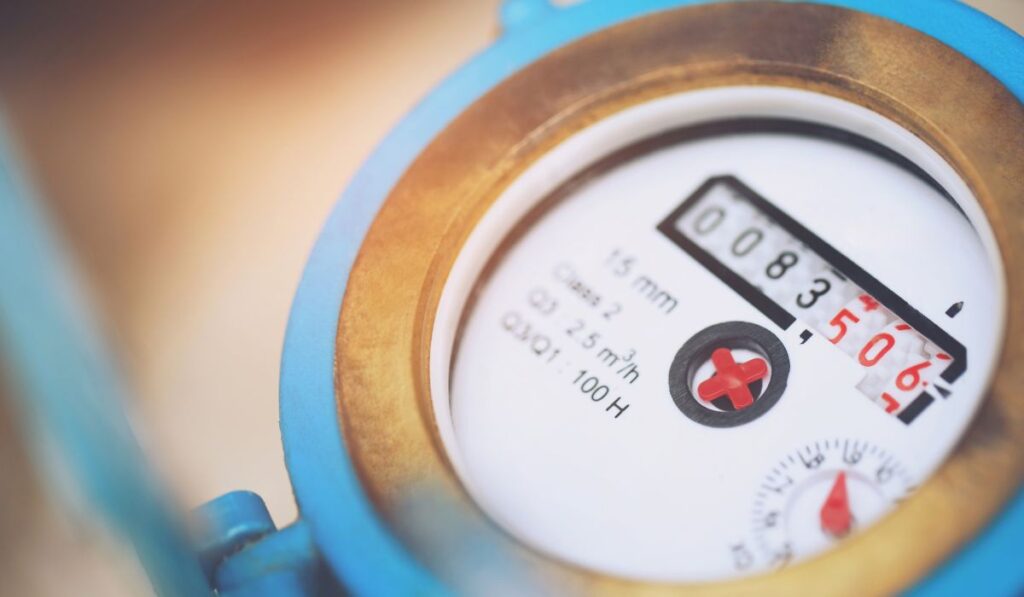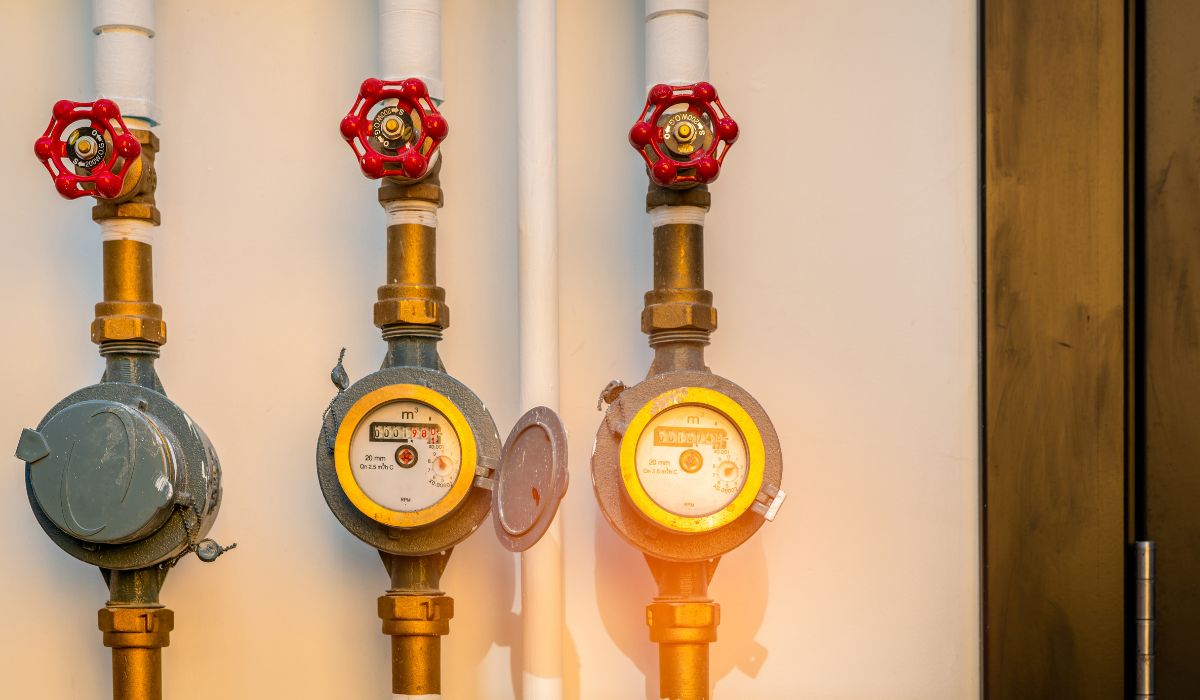Types of water flow meters include mechanical, magnetic, ultrasonic, and vortex flow meters. Each type serves specific measurement needs across diverse applications.
Selecting the right water flow meter is crucial for accurate fluid measurement in industrial, municipal, fire protection pipe, and environmental systems. With various technologies like mechanical meters, utilities often choose positive displacement or turbine meters for their reliable performance in clean water. Magnetic flow meters excel in measuring flow in conductive liquids without moving parts, making them ideal for wastewater treatment.
Ultrasonic meters use sound waves to gauge flow rates, offering non-invasive measurement ideal for sensitive systems. Vortex meters capture the fluid’s swirls and are favored in steam and gas applications. Understanding these types can help in selecting the most efficient device for monitoring and managing water flow.
The Importance Of Measuring Water Flow
Knowing how much water moves in and out of systems is crucial. Many industries rely on accurate water flow measurements. They ensure efficiency and sustainability. Proper flow information helps us understand water usage. It also keeps systems working at their best. Let’s dive into why measuring water flow is the key to managing this vital resource.
Catching Leaks Early
Leaks waste water and money. They must be found quickly. A water flow meter makes this possible. By monitoring flow rates, any unexpected changes can signal a leak. This heads-up allows for speedy repairs. It prevents more costly damage.
- Identify unusual water flow patterns.
- Save on repair costs.
- Prevent large-scale water loss.
Improving Water Efficiency
Optimizing water use is vital for conservation. Flow meters play a huge role. They show where we can be more efficient. Smart water use means reduced costs and better environmental impact.
| Flow Meter Benefit | Efficiency Gain |
|---|---|
| Monitor Usage | Spot areas to reduce flow. |
| Data Collection | Make informed adjustments. |
| Maintenance Alerts | Keep systems at peak performance. |
Key Principles Of Water Flow Meters

Water flow meters are essential in measuring how much water moves through a pipe. Understanding how they work helps us use and manage water better. We need to know the key principles behind these useful tools.
Mechanical Vs. Electronic Variants
Water flow meters come in two main types: mechanical and electronic. Mechanical meters rely on the physical motion of water to operate. They have parts like turbines or paddles that move with the flow of the water. Electronic meters, on the other hand, use electrical sensors. These sensors detect and measure the water flow without moving parts.
- Mechanical Meters:
- Positive Displacement
- Turbine
- Electronic Meters:
- Magnetic
- Ultrasonic
Understanding Units Of Measurement
The water flow rate is crucial in different applications. We use special units to express these rates. These units are gallons per minute (GPM) and liters per minute (LPM) in most countries. For bigger flows, they use cubic meters per hour (m³/h).
| Unit | Description |
|---|---|
| GPM | Gallons per minute, common in the USA |
| LPM | Liters per minute, used worldwide |
| m³/h | Cubic meters per hour, for larger volumes |
Mechanical Water Flow Meters
Mechanical water flow meters are essential tools for measuring how much water flows through a pipe. They come in different types, each with unique features. Such meters are perfect for various applications, including residential, industrial, and irrigation uses. Let’s learn about two primary types: Positive Displacement Meters and Turbine Flow Meters.
Positive Displacement Meters
Positive Displacement (PD) meters measure water flow by dividing it into small volumes. These meters count how many times the volume is filled and emptied. This helps to measure accurately the total water used.
- High precision in measurement
- Great for low flow rates
- Durable and long-lasting design
| PD Meter Type | Use Case |
|---|---|
| Oscillating Piston | Residential Water Billing |
| Rotary Vane | Commercial Facilities |
Turbine Flow Meters
Turbine flow meters have a rotor in the path of water flow. The water turns the rotor, and each turn gets counted. The speed tells us how much water is moving through. They are helpful where flow rates are higher.
- Rotors turn as water moves through
- Speed is measured to calculate flow
- Best for steady, high flow rates
Turbine meters come in various sizes. They fit different pipe diameters. Here’s a simple breakdown:
- Small turbines for home water systems
- Larger units for industrial settings
Electronic Water Flow Meters

Electronic Water Flow Meters: Precision and versatility define electronic water flow meters. These meters measure how much water passes through them.
They help in various applications. Industries use them for accurate readings. Households benefit from them for better water management.
Magnetic Flow Meters
Magnetic flow meters, or magmeters, utilize a magnetic field to measure water flow. They only work with conductive liquids. Magmeters shine due to their no moving parts (meaning less maintenance) and obstruction-free design (causing no pressure drop).
- High accuracy and reliability.
- Suitable for wastewater and other dirty liquids.
- No parts to wear out.
Ultrasonic Flow Meters
Ultrasonic flow meters detect water flow using sound waves. They are non-invasive. This means they can measure flow externally. So, no need to cut pipes or stop the flow.
They work well with most liquids and are great for complex applications. Advantages include:
| Advantage | Explanation |
|---|---|
| Friendly installation | Clamp-on models are easy to install anywhere. |
| Flexibility | They adjust to different pipe sizes and materials. |
| Maintenance-free | No moving parts mean little to no maintenance. |
Emerging Technologies In Water Flow Measurement
Today’s water management systems are smarter and more efficient, thanks to emerging technologies in water flow measurement. These innovations offer accuracy and real-time data. They make water management easier for industries and municipalities alike. Let’s dive into some of the latest advances in this field.
Laser Technology
Laser technology is revolutionizing the way we measure water flow. Unlike traditional meters, laser meters do not touch the water. They use light to measure the speed at which water travels. This non-invasive technique prevents contamination and reduces wear and tear on the device. This prolongs lifespan and reduces maintenance costs. Below are some key features of laser water flow meters:
- High accuracy and precision
- Non-contact measurement
- Low maintenance needs
Iot-enabled Smart Meters
IoT-enabled smart meters are another exciting development in water flow measurement. These meters connect to the Internet of Things (IoT), allowing remote monitoring and control. They provide real-time usage data, enabling better water resource management. IoT smart meters come with benefits like:
- Automatic leak detection
- Usage tracking for conservation efforts
- Remote reading and control
With the help of smart technologies, water utilities can optimize operations and minimize losses. Advanced data analysis can also predict future usage trends. This helps ensure sustainable water usage.

Credit: www.amazon.com
Selecting The Right Water Flow Meter
Choosing the right water flow meter is crucial for accurate water measurement. Whether for industrial use or residential monitoring, selecting the correct type ensures efficiency and reliability. Learn about considerations that guide this important decision.
Considerations For Accuracy And Range
Different flow meters excel in various aspects. It’s essential to consider what suits your needs best.
- Accuracy: The precision of the readings is paramount. A proper meter avoids costly errors.
- Range: Identify flow rates in your system. Select a meter that can handle these rates.
For example, turbinemeters provide high accuracy. But they might not work well with low flow rates.
Environment And Installation Factors
The environment plays a significant role in meter selection. Installation space and conditions matter.
| Factor | Description |
|---|---|
| Space | Ensure the meter size fits your available space. |
| Conditions | Consider temperature and pressure that the meter will face. |
| Chemicals | Check compatibility with any chemicals in the water. |
For harsh conditions, a robust meter like a magnetic flow meter might be best.
Identify all relevant details before selecting a flow meter. This ensures efficient and accurate water management.
Installation Best Practices
Proper installation is key to making sure water flow meters work right. It’s like fitting puzzle pieces perfectly. Let’s dive into the best ways to install different types of water flow meters, focusing on whether to roll up your sleeves and do it yourself or call in a pro, and how to keep your meter running smoothly for a long time.
Professional Vs. Diy Installation
Choosing between a pro or DIY can be tough. Think about skill level, type of meter, and safety. Professionals have special tools and know-how. They ensure no mistakes during setup. But if you’re handy and have a simple meter, DIY could save money. Just follow the manual closely!
| Type of Meter | DIY Friendly? | Pro Recommended? |
|---|---|---|
| Mechanical | Yes | Depends on complexity |
| Ultrasonic | No | Yes |
| Magnetic | No | Yes |
Read the manual, gather tools, and turn off water before starting. Always wear safety gear. Double-check connections and test before full use. Reach out to a pro if unsure.
Maintenance Tips For Longevity
To extend your meter’s life, maintenance is key. Simple steps can keep it accurate and reliable. Regular checks are a must. Look for leaks or damage. Clean parts as the manual says. Write down readings to spot changes over time.
- Inspect monthly for signs of wear.
- Keep the meter and nearby pipes clean.
- Lubricate moving parts if needed.
- Calibrate as suggested by the manufacturer.
- Note performance; compare with past records.
For electronic meters, check batteries and wires. Make sure displays are clear. For outdoor meters, shield them from extreme weather. Schedule a pro check-up yearly.
Leveraging Data For Water Management
In today’s world, effective water management plays a pivotal role in sustainability. The types of water flow meters provide crucial data. This data helps manage water use smartly. We explore various water flow meters. They offer insights into consumption. And they smooth the integration with smart systems.
Analyzing Consumption Patterns
Understanding water usage comes down to detailed data. Water flow meters record the amount of water flowing through a system. They reveal patterns over days, weeks, or months. With these insights, one can:
- Identify peak usage times
- Spot potential leaks or inefficiencies
- Inform resource planning and conservation strategies
Such detailed reporting should lead to better water management. Analytics tools can process the data. They can suggest ways to reduce waste and save costs.
Integrating With Smart Home Systems
Smart homes utilize technology for efficiency and convenience. Integrating water flow meters with these systems has great benefits. Users get a real-time look at water use. Remote access through apps allows for immediate adjustments. Here’s what integration can offer:
- Automated shut-off during a leak
- Real-time alerts for unusual usage
- Trends analysis for informed decision-making
This integration can cut costs and increase the life of water infrastructures. It’s a smart move for any home aiming for high efficiency.
Frequently Asked Questions Of Types Of Water Flow Meter
What Are The Different Types Of Flow Meters?
Different types of flow meters include electromagnetic, ultrasonic, turbine, vortex, positive displacement, and differential pressure meters. Each type serves specific measurement needs across various industries.
What Type Of Flowmeter Is Used For Water?
Various types of flowmeters can measure water flow, including magnetic, ultrasonic, turbine, and paddlewheel flowmeters.
What Is The Most Accurate Type Of Flow Meter?
The most accurate type of flow meter is the Coriolis mass flow meter, known for its precision in various applications.
How Many Types Of Water Meters Are There?
There are mainly five types of water meters: mechanical, ultrasonic, electromagnetic, vortex, and compound. Each serves different metering needs.
What Is A Water Flow Meter?
A water flow meter is a device that measures the volume or flow rate of water moving through a pipe.
How Do Water Flow Meters Work?
Water flow meters typically use turbine, ultrasonic, or electromagnetic sensors to gauge water movement within a system.
Conclusion
Selecting the right water flow meter is pivotal for accurate fluid measurement. Each type caters to different applications, ensuring precision and efficiency. As technology evolves, so do these devices, offering tailored solutions for diverse industries. Remember to weigh factors like flow rate, viscosity, and environment before making your choice.
Choose wisely for optimal performance and reliability in your flow measurement needs.

I’m Abdus Sobur, a highly skilled and professional Fire Safety Officer with a passion for safeguarding lives and property. Over the course of my career, I’ve conducted numerous successful fire safety audits, earning a reputation for excellence in ensuring public safety.
In addition to my role as a Fire Safety Officer, I’m also dedicated to raising awareness about the importance of fire safety. Through my blog, I share insights into the functions of different fire safety equipment, aiming to empower individuals with the knowledge they need to protect themselves and their communities.
I’m driven by a deep commitment to promoting fire safety awareness and preventing fire-related incidents.

